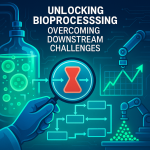🔬 Traditional media limits drug production efficiency.
💡 Researchers are developing new strategies, focusing on dipeptides to enhance nutrient solubility.
📊 Data-driven tools and AI are being used to optimize media quickly.
🚀 This emphasizes a future of smarter, customizable media solutions in biopharma.
Introduction:
The article discusses the growing importance of media design in the context of process intensification in biopharmaceuticals. As the demand for efficient drug production increases, researchers must innovate and adapt culture media to meet these evolving requirements.
- Culture media is increasingly recognized as a limiting factor for intensified drug production, necessitating innovative feed designs and technology upgrades.
- Traditional media formulations are often inadequate for high-density cell cultures and continuous production demands, leading to a re-evaluation of media design.
- Dipeptides present a promising solution for enhancing nutrient solubility and stability, addressing the challenges posed by poorly soluble amino acids.
- Innovations in media design are driven by new technologies, such as metabolic modeling and AI, facilitating faster and more accurate nutrient optimization.
- Future developments aim to create a toolkit of well-characterized dipeptides for scalable production, ensuring compliance with regulatory standards and improving process control.
Conclusion:
The article highlights that the interplay between process intensification and media design is critical for the biopharmaceutical industry. By addressing nutrient delivery challenges through innovative solutions like dipeptides, and leveraging advanced technologies, the sector is poised for significant advancements. The future of media design appears to be more responsive and tailored to the specific needs of high-performance cell cultures, ultimately enhancing drug production efficiency.



